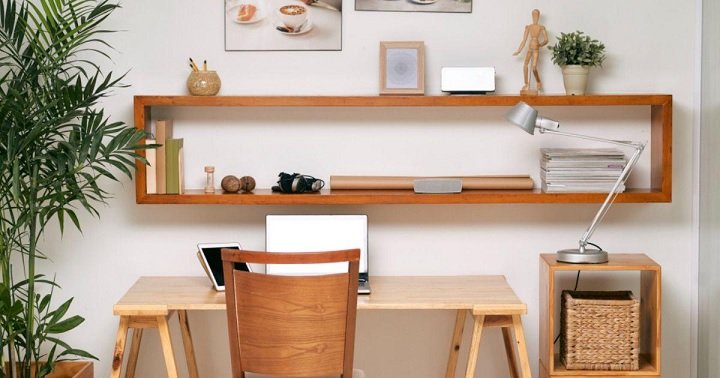
Landscaping goes beyond creating an appealing outdoor area; it involves careful planning and incorporating structural elements that offer both beauty and practicality. Retaining walls, often considered the backbone of landscaping, play a crucial role in shaping landforms, preventing soil erosion and establishing surfaces.
The longevity of these structures is vital for their long term effectiveness. In this exploration we will delve into the realm of retaining wall suppliers focusing on the components that contribute to their durability and lasting nature.
The Importance of Retaining Walls in Landscaping
Retaining walls are not merely features; they serve a purpose in landscape design. These structures are specifically designed to hold back soil on slopes preventing erosion, managing water runoff and creating spaces on terrain. Whether utilized in gardens, commercial landscapes or public areas, retaining walls act as heroes that provide stability and structure to outdoor environments.
The Role of Durability in Retaining Walls
Durability is a characteristic when it comes to retaining walls. These structures are exposed to factors such as weather changes, moisture content and the constant pressure exerted by retained soil. Ensuring their durability is essential for maintaining their functionality, over time.
A strong retaining wall not ensures that the landscaping feature will last a time but it also guarantees the safety and stability of the surrounding area.
Choosing the Right Materials for a Retaining Wall
Traditional Options
Concrete- Concrete has always been a choice, for building retaining walls. Its durability and versatility make it an excellent option. With advancements decorative finishes can be added to retaining walls allowing them to seamlessly blend with the overall landscapes aesthetic.
Wood- Wooden retaining walls have an inviting appeal. While wood is known for its charm it’s important to treat it with preservatives to enhance its durability and protect it from decay, insects and harsh weather conditions.
Innovative Choices
Interlocking Concrete Blocks- Interlocking concrete blocks have become increasingly popular due to their installation process and contemporary appearance. The interlocking design ensures stability making these blocks suitable for design styles.
Gabion Walls- Gabion walls are constructed by using wire cages filled with rocks or other materials providing a durable solution. The inherent strength of the materials used. Their ability to allow water drainage contribute to their lasting nature.
Segmental Retaining Wall (SRW) Systems- SRW systems utilize engineered blocks that fit together seamlessly.These systems provide a lot of flexibility, stability and various design options. The SRW blocks modular nature and adds to the structure’s durability.
Using Natural Materials
Stone- When it comes to stone retaining walls they are well known for their durability and timeless beauty. Whether you choose fieldstone, limestone or granite these walls can withstand the test of time and harsh weather conditions gracefully.
Brick- Brick retaining walls offer a long lasting solution. With their design you have the flexibility to create patterns. When properly installed brick walls not only provide resilience. Also requires low maintenance.
Key Supplies for Durable Retaining Walls
The durability of a retaining wall depends not on the choice of materials but on the quality of supplies used during construction. Here are some essential supplies that contribute to the integrity and longevity of retaining walls:
1. Geogrid Reinforcement
Geogrids are materials specifically designed to reinforce the soil behind a retaining wall. By placing them between layers of soil or blocks geogrids enhance the structure’s strength. Prevent soil pressure from causing any structural failures. This reinforcement becomes particularly crucial for retaining walls that require stability.
2. Effective Drainage Solutions
Ensuring drainage is vital for maintaining the durability of a retaining wall.
If the drainage is not properly managed behind the wall it can cause water to accumulate and put pressure on the structure potentially compromising its integrity. To ensure water management and prevent any damage it is important to incorporate drainage solutions like weep holes, drainage pipes and gravel.
3. Compactable Fill Material
The type of material used for backfilling behind the retaining wall plays a role in maintaining stability. It should be compatible to avoid settling while allowing drainage to prevent water buildup. Crushed stone or gravel are used materials that interlock well and provide a solid foundation.
4. Leveling and Anchoring Tools
To achieve both appeal and structural stability it is essential to construct a level and straight retaining wall. This can be achieved by using leveling tools such as builders levels or laser levels for accuracy during construction. Additionally, anchoring tools like pins or stakes should be employed to secure the wall in place and prevent any shifting over time.
Design Factors for lasting Retaining Walls
Aside from selecting the materials and supplies there are several crucial design considerations to ensure the durability of a retaining wall. Here are some key factors to keep in mind;
1. Slope
The height and slope of the terrain have an impact on the design and longevity of a retaining wall. If the wall is taller or if it faces slopes additional reinforcement like geogrids may be necessary to counteract the increased forces exerted by the soil being retained.
2. Managing Water
Proper water management is vital for maintaining the durability of a retaining wall. Incorporating drainage solutions and ensuring grading will prevent water from building up behind the wall reducing erosion risks and structural damage.
3. Soil Analysis
Understanding the composition and characteristics of the soil is crucial when designing a retaining wall. Different soil types have properties that can affect stability so conducting a soil analysis helps in making informed design decisions.
4. Climate Considerations
Climate conditions play a role in determining how durable a retaining wall will be. Factors such as freeze thaw cycles, excessive rainfall or prolonged exposure to sunlight can gradually impact materials over time.
Choosing materials and designs that can withstand climate conditions is crucial, for ensuring the longevity of retaining walls.
5. Adherence to Local Building Codes
It is essential to comply with building codes and regulations when constructing retaining walls. This involves obtaining the permits following engineering guidelines and ensuring that the construction meets all the required standards.

Conclusion
In summary, retaining walls serve as the foundation of landscaping by providing structure preventing erosion and creating spaces on terrains. It is crucial to prioritize the durability of these structures to ensure their lasting functionality. By selecting materials utilizing necessary supplies and considering design elements that enhance both visual appeal and durability a retaining wall transcends being just a functional requirement it becomes an enduring and integral part of the outdoor space.







